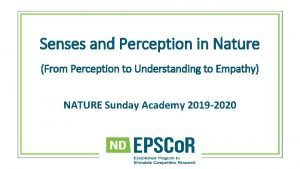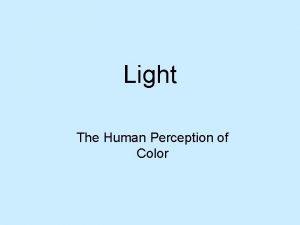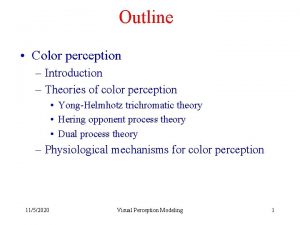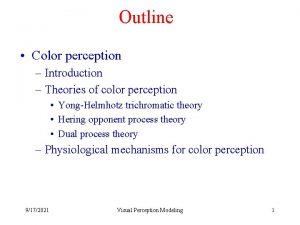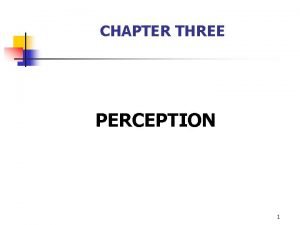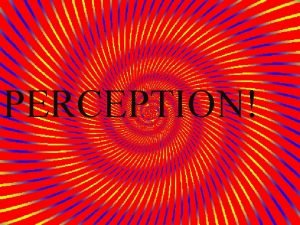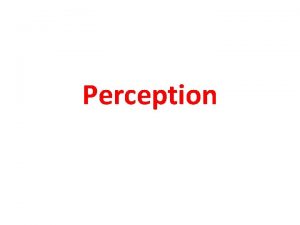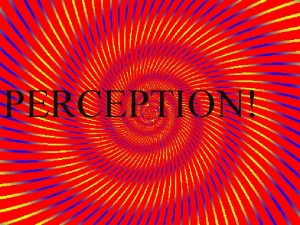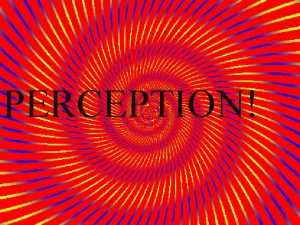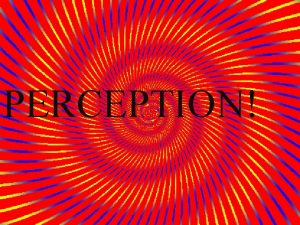The Nature of Color Color Physics Perception Newtons










![Yellow YELLOW Orange Newton’s Color Circle Green ORANGE Red Blue Indigo Violet [ADDITIVE] Yellow YELLOW Orange Newton’s Color Circle Green ORANGE Red Blue Indigo Violet [ADDITIVE]](https://slidetodoc.com/presentation_image_h/105eb18870e6569b0fd69edc422332a3/image-11.jpg)











![Traditional Color Circle [SUBTRACTIVE] Traditional Color Circle [SUBTRACTIVE]](https://slidetodoc.com/presentation_image_h/105eb18870e6569b0fd69edc422332a3/image-23.jpg)








- Slides: 31

The Nature of Color: Color Physics & Perception

Newton’s Experiment in 1676:

The 7 Spectral Hues “a dispersive equilateral prism refracting & reflecting an incoming beam of uniform white light”


Spectral Hue: a color that is evoked by a single wavelength or narrow band of wavelengths of light in the visible spectrum. Every wavelength of light is perceived as a spectral color… Despite having different color names: Red, Orange, Yellow, Blue, (Indigo), Violet They create ONE-CONTINUOUS-SPECTRUM

Chromaticity Diagram Different wavelengths for different colors

Dueling Theories of Light as a PARTICLE Light as a WAVE

Newton vs. Goethe Sir Isaac Newton: • 1642 – 1727 • English physicist, mathematician, astromomer • Particle Theory of Light • Gravity • Conclusive evidence collected from isolated lab Johann Wolfgang von Goethe: • 1749 - 1832 • German writer, artist, politician • “looked at phenomena from within themselves” • Experiments looked upon from the human experience in his natural environment • “Colors are the deeds and sufferings of light”

Radio excerpt: • On Being’s (Krista Tippett) interview with Physicist, Author, Teacher: Arthur Zajonc, min. 5: 35 -13: 00 • Transcript

The Color Spectrum (visible light spectrum)
![Yellow YELLOW Orange Newtons Color Circle Green ORANGE Red Blue Indigo Violet ADDITIVE Yellow YELLOW Orange Newton’s Color Circle Green ORANGE Red Blue Indigo Violet [ADDITIVE]](https://slidetodoc.com/presentation_image_h/105eb18870e6569b0fd69edc422332a3/image-11.jpg)
Yellow YELLOW Orange Newton’s Color Circle Green ORANGE Red Blue Indigo Violet [ADDITIVE]

The Complete Electromagnetic Spectrum This is the only part visible to The human eye.

Red, Green & Blue (RGB): 3 Primaries of Light

The Additive Primaries of Light B + G = Cyan R + G = Yellow R + B = Magenta R + G + B = WHITE B Magenta…not a color?

Why is Light part of the ADDITIVE System? When all 3 Light Primaries are added, they produce WHITE— that original pure ray of light.

Human Color Perception Retina contains: RGB receptors

Human Color Perception

Rods ‘n Cones • RODS: responsible for our seeing VALUE ---function best during NIGHT-TIME, form and value perception • CONES: responsible for our seeing COLOR ---made up of 3 photo-receptors: Red, Green, & Blue (to create all perceivable colors) ---function best during the DAY-TIME, in FULL LIGHT

Radio excerpt: • Radio. Lab’s podcast Colors min. 9: 15 – 18: 15


How We See Colored Surfaces

Additive LIGHT System vs. Subtractive PIGMENT System
![Traditional Color Circle SUBTRACTIVE Traditional Color Circle [SUBTRACTIVE]](https://slidetodoc.com/presentation_image_h/105eb18870e6569b0fd69edc422332a3/image-23.jpg)
Traditional Color Circle [SUBTRACTIVE]

Red, YELLOW & Blue (RYB): 3 Primaries of Pigment

Why are PIGMENTs part of the SUBTRACTIVE System?

CMYK color model (four process colors) Color printing uses these 4 ink colors: Cyan, Magenta, Yellow and Key (Black). When CMY “primaries” are combined, the resulting “secondary” mixtures are: red, green, & blue.

Theoretically … 3 Primary PIGMENTS mixed together create: • R+Y+B = Black • Only when you SUBTRACT one pigment, subtract another pigment, subtract all pigments… do you reach WHITE, returning to that single ray of light… • LESS LIGHT is reflected; the color becomes DARKER. You are essentially SUBTRACTING the amount of light reflected.

Computer Color “All computer monitors display colors by actual Additive colored Light…. Essentially, a color monitor paints and draws with light” • • • 16 million colors+! Color Monitors are GRIDs of pixels PIXELS = 3 phosphors: RGB Electron beams pump phosphors LCD: Liquid Crystal Display (flat monitors) NO flickering, less distortion. Bends/twists light to display colored images. • LED: Light Emitting Diodes—backlit, produce brighter colors, sharper images

Simulated Transparency Exercises: 1) Intro. Adobe Illustrator, colored gels 2) In AI: using geometric shapes, create overlaps, changing opacity to simulate transparency 3) Practice in Color-Aid: reproduce at least one overlap created in AI (two colors + overlap creates 3 rd color)


GROUP PROJECT: a collaborative design on simulated transparency • Color-Aid: Pick a few analogous and a few complementary colors (6 maximum base hues) • Using Geometric OR Organic shapes, design a dynamic interplay of positive/negative spaces and shapes (rotate, re-orient, change scale of shapes to provoke movement & rhythm) • One SHARED SHAPE with neighboring design • Create a minimum of 4 OVERLAPS: 4 Simulated Transparencies *Examples on color site
 Nature of perception
Nature of perception Color perception examples
Color perception examples Nature and nature's laws lay hid in night
Nature and nature's laws lay hid in night Determinace lidské psychiky
Determinace lidské psychiky Nature and scope of physics
Nature and scope of physics Nature and scope of physics
Nature and scope of physics Why does it happen
Why does it happen University physics with modern physics fifteenth edition
University physics with modern physics fifteenth edition Physics ia sample
Physics ia sample Hát kết hợp bộ gõ cơ thể
Hát kết hợp bộ gõ cơ thể Slidetodoc
Slidetodoc Bổ thể
Bổ thể Tỉ lệ cơ thể trẻ em
Tỉ lệ cơ thể trẻ em Voi kéo gỗ như thế nào
Voi kéo gỗ như thế nào Tư thế worm breton là gì
Tư thế worm breton là gì Bài hát chúa yêu trần thế alleluia
Bài hát chúa yêu trần thế alleluia Các môn thể thao bắt đầu bằng tiếng chạy
Các môn thể thao bắt đầu bằng tiếng chạy Thế nào là hệ số cao nhất
Thế nào là hệ số cao nhất Các châu lục và đại dương trên thế giới
Các châu lục và đại dương trên thế giới Công thức tính độ biến thiên đông lượng
Công thức tính độ biến thiên đông lượng Trời xanh đây là của chúng ta thể thơ
Trời xanh đây là của chúng ta thể thơ Cách giải mật thư tọa độ
Cách giải mật thư tọa độ Làm thế nào để 102-1=99
Làm thế nào để 102-1=99 Phản ứng thế ankan
Phản ứng thế ankan Các châu lục và đại dương trên thế giới
Các châu lục và đại dương trên thế giới Thể thơ truyền thống
Thể thơ truyền thống Quá trình desamine hóa có thể tạo ra
Quá trình desamine hóa có thể tạo ra Một số thể thơ truyền thống
Một số thể thơ truyền thống Bàn tay mà dây bẩn
Bàn tay mà dây bẩn Vẽ hình chiếu vuông góc của vật thể sau
Vẽ hình chiếu vuông góc của vật thể sau Nguyên nhân của sự mỏi cơ sinh 8
Nguyên nhân của sự mỏi cơ sinh 8 đặc điểm cơ thể của người tối cổ
đặc điểm cơ thể của người tối cổ
